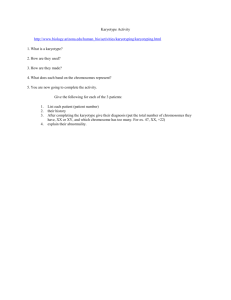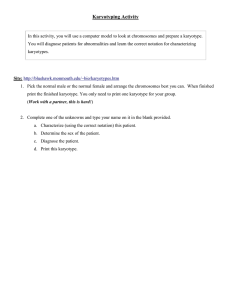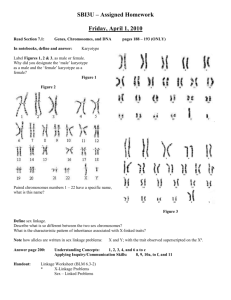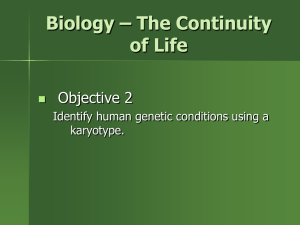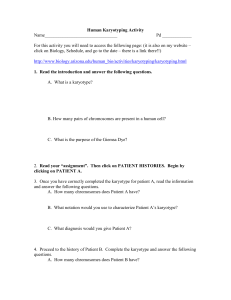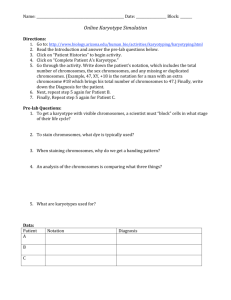Karyotype Webquest Name: ____________________
advertisement
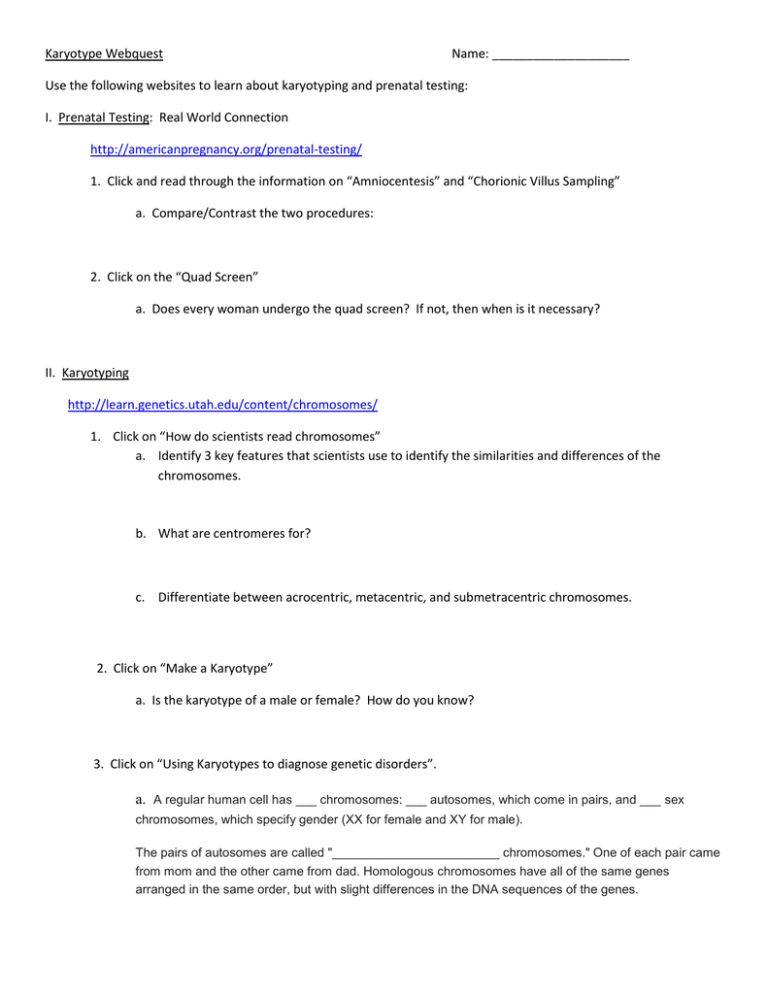
Karyotype Webquest Name: ____________________ Use the following websites to learn about karyotyping and prenatal testing: I. Prenatal Testing: Real World Connection http://americanpregnancy.org/prenatal-testing/ 1. Click and read through the information on “Amniocentesis” and “Chorionic Villus Sampling” a. Compare/Contrast the two procedures: 2. Click on the “Quad Screen” a. Does every woman undergo the quad screen? If not, then when is it necessary? II. Karyotyping http://learn.genetics.utah.edu/content/chromosomes/ 1. Click on “How do scientists read chromosomes” a. Identify 3 key features that scientists use to identify the similarities and differences of the chromosomes. b. What are centromeres for? c. Differentiate between acrocentric, metacentric, and submetracentric chromosomes. 2. Click on “Make a Karyotype” a. Is the karyotype of a male or female? How do you know? 3. Click on “Using Karyotypes to diagnose genetic disorders”. a. A regular human cell has ___ chromosomes: ___ autosomes, which come in pairs, and ___ sex chromosomes, which specify gender (XX for female and XY for male). The pairs of autosomes are called "________________________ chromosomes." One of each pair came from mom and the other came from dad. Homologous chromosomes have all of the same genes arranged in the same order, but with slight differences in the DNA sequences of the genes. b. Identify 3 conditions that can develop from having too many or too few chromosomes, missing pieces of chromosomes, or mixed up pieces of chromosomes? c. Differentiate between terminal and interstitial deletions. d. What is a translocation? e. Differentiate between reciprocal and Robertsonian translocations. III. Analyzing Karyotypes *Use the karyotypes on the next few pages to complete the information in Table 1. Use the internet to research the chromosomal abnormalities. Table 1 Karyotype # Gender # of autosomes # of sex chromosomes Normal or Abnormal (If abnormal, identify disorder and symptoms) 1 2 3 4 5 6 7 8 IV. Final Reflection 1. What do you think the relationship is between chromosomal abnormalities and age? 2. What do you think could be done to minimize the risk of having a child with a chromosomal abnormality? Karyotype #1 Karyotype #2 Karyotype #3 Karyotype #4 Karyotype #5 Karyotype #6 Karyotype #7 Karyotype #8
